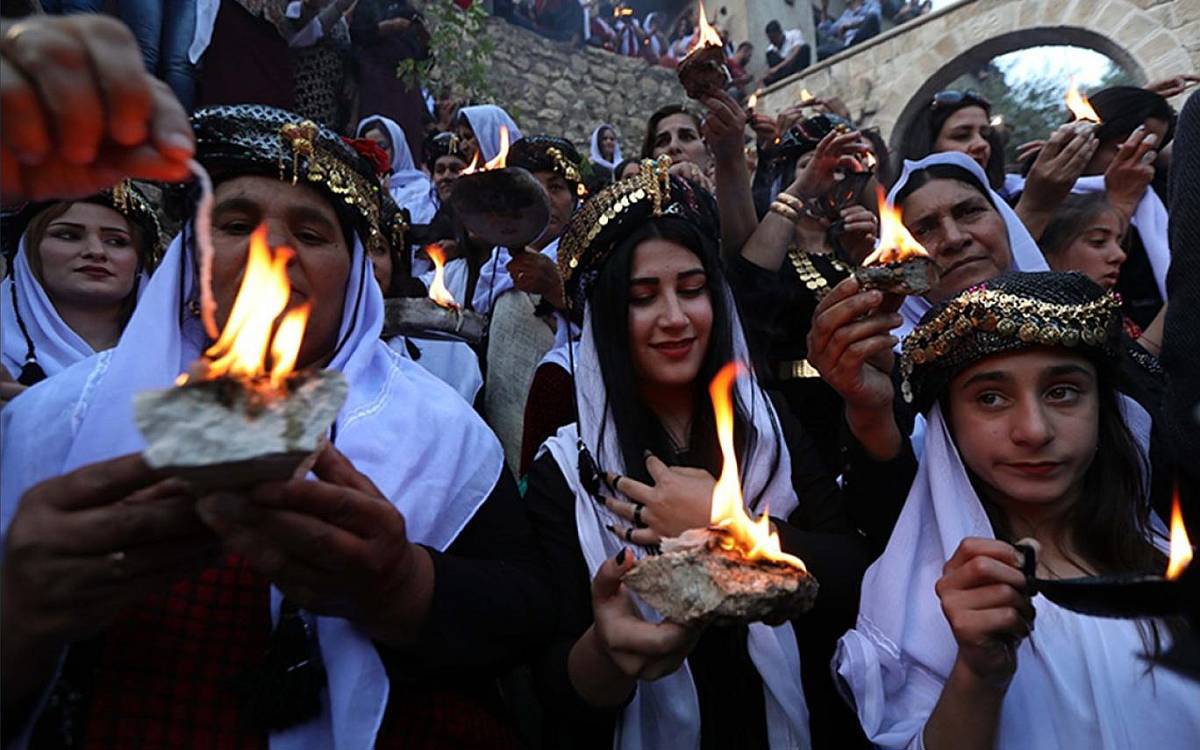Êzidîs celebrate "Çarşema Sor" today.
Çarşema Sor, also known as Red Wednesday, is the Êzidî New Year festival celebrated in spring. It is observed on the first Wednesday on or after April 14 according to the Gregorian calendar. This festival is rich in symbolism and rituals that reflect the Êzidî religion and culture.
Here’s a brief overview of the festivities:
- Preparation: The celebrations begin on Tuesday evening, as Êzidî believe a day starts at sunset. They boil and color eggs, bake festive bread called sawuk, and visit graves to honor the dead with offerings and fruits.
- Festive Attire: People wear special garments and visit temples, especially the sacred site of Lalish, where the Zemzem spring is located.
- Rituals: At Lalish, sacrifices are offered at the cave entrance, and colorful ribbons are tied to wishing trees on the surrounding hills. Red flowers are collected and used for decoration, and bonfires are lit at night.
- Community Activities: The festival includes the game of hekkane, which involves egg tapping. The cracking of the egg symbolizes the creation of life from the primordial White Pearl, akin to the Big Bang.
- Religious Ceremonies: In the evening, pilgrims gather at Lalish’s inner courtyard. The Baba Sheikh and other dignitaries lead hymns and prayers. As night falls, the Qawwals recite hymns accompanied by flutes and tambours.
- Sacred Fire: A priest bearing sacred fire emerges from the temple at sunset, and the attendees light their lamps from this fire.
- Dawn Ritual: Before daybreak, a mixture of clay, eggshells, red flowers, and curry is applied beside doors and entrances while reciting the Qewlê Çarşemê hymn. (RT/VK)






